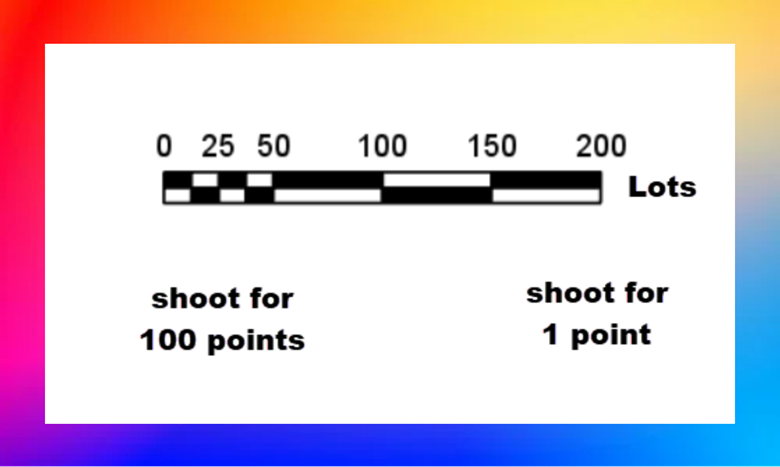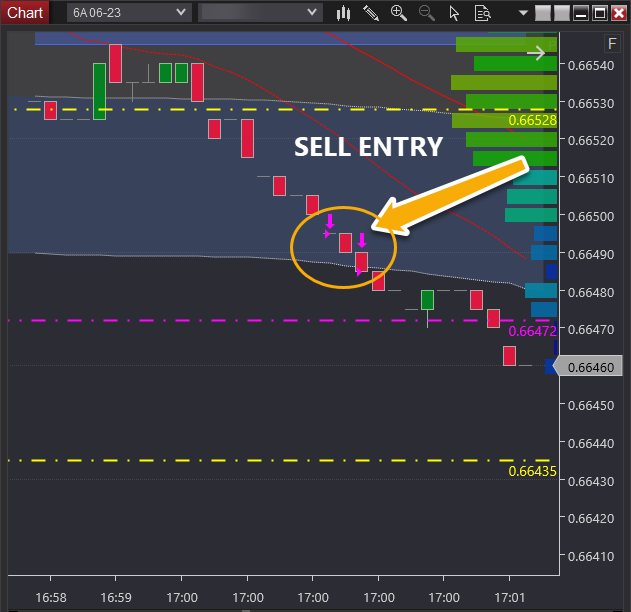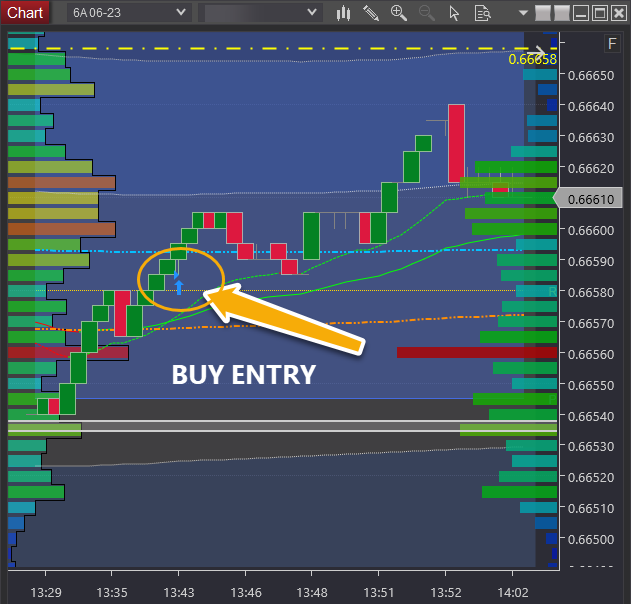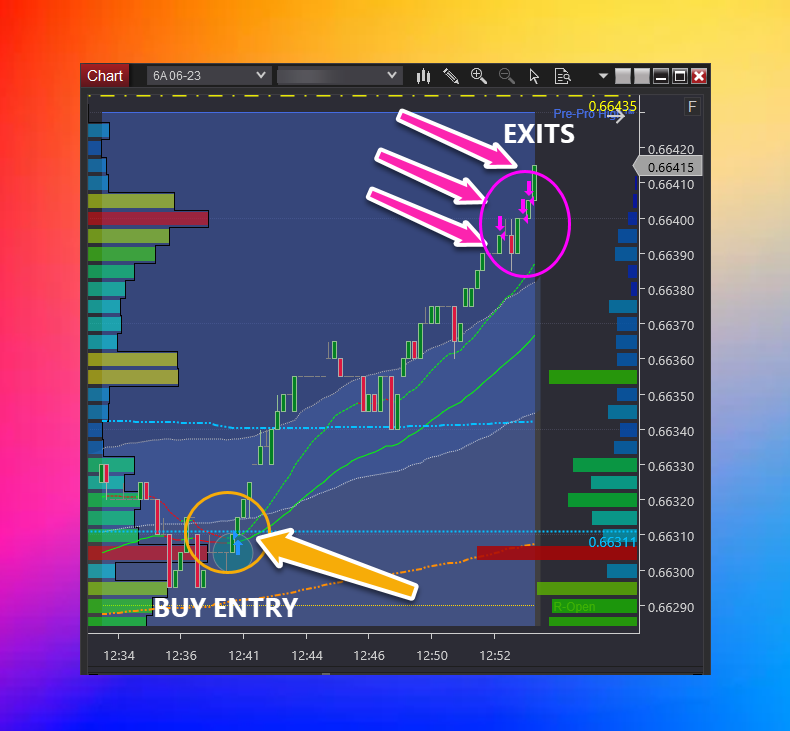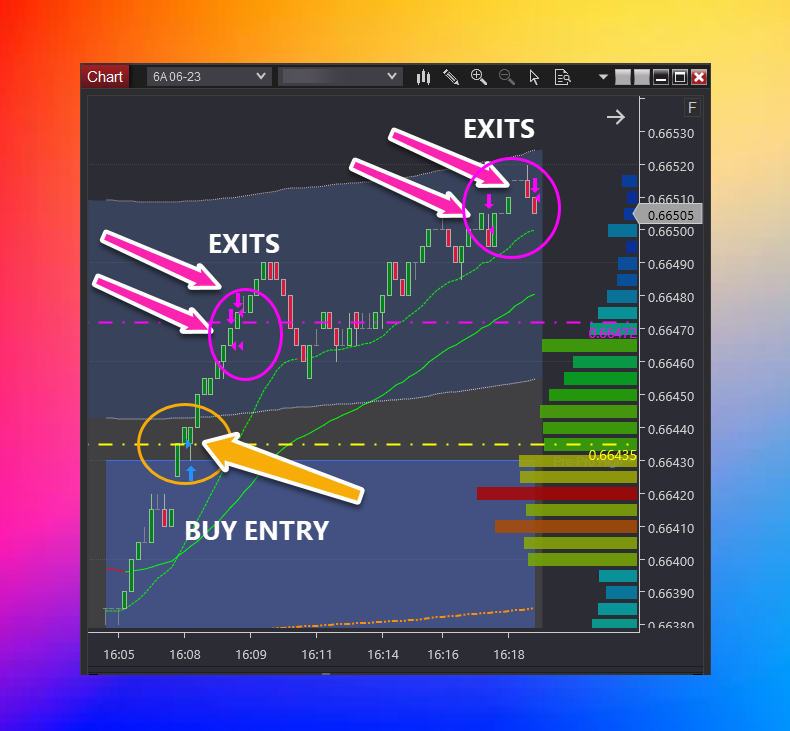Trading 1 Lot for 100 Points or Trading 100 Lots for 1 Point - Which One Should Be You?
Don't worry about specifics like pips, ticks, cents, bps...
Instead, we'll refer to all of them as points. Okay?
Now, which is more likely:
You put on a trade aiming for 5 points and it works
You put on a trade aiming for 30 points and it works
You put on a trade aiming for 100 points and it works
That would be 5 points. Right?
So why don't you make trades for only 5 points?
Answer: Because you find yourself having to risk more than 5 points or you always lose. Agree?
And whatever number of points you're risking, you need to make a fair bit more as a reward. Correct?
Now what do you know about how professionals trade? I'll tell you in a minute:
What was my first live trading (with real money) exercise when I traded at a professional firm?
Only risk 1 point to only make 1 point.
Sounds crazy. But here's why...
You see:
It wasn't an exercise in making money. If you made a point you had to get out of the market to keep practising entering a trade at precisely the right time to 'move onside' immediately.
What does it mean to move onside?
It means the price doesn't trade at a price worse than your entry.
Just imagine if every time you entered a trade, it always went in your favour immediately.
It means you can set yourself up for greater payouts without increasing your dollars risked. It means the market can move only slightly to pay you meaningfully. And because smaller moves working for you are much more likely, you get paid more often.
That's the gist of it. But in reality:
Most people operate close to the left, while consistently successful traders operate closer to the right.
Take tennis:
If you serve a fault and another - you don't give yourself a chance to make a point. Right?
But if you can get your serve in, at least you've got a chance.
And trading's the same. Move onside and you give yourself a chance.
What's a chance look like?
In each of the trades taken below, what can you see?
With each trade entry price immediately moved in favour. Each entry moved onside.
But guess what?
None of these trades ultimately worked! Each trade finished at about the same entry price. Not a loss. But not a win either.
But because you're so good at moving onside:
You can optimise the size of your trades so that relatively smaller moves are lucrative. Because in addition to trades that don't win or lose, you'll also have trades like this:
And that's how professionals play the game.
How do they learn this? I'll tell you in a second. First:
Room for flex
Crafting a solid foundation for a towering skyscraper requires a delicate balance between unyielding concrete and steel while allowing for a slight flex for the earth's subtle movements. Correct?
A slight flex is needed for trades too.
You aim to move onside immediately - and you often can. But remember the part of the exercise that said 'only lose 1 point'? The emphasis is slight. Like the trades below:
The first flex ends in a minor loss.
The second flex ends lucratively.
Professionals and precision: How's it done?
Despite using charts above for visual aids, professionals don't derive the decisions to enter and exit from charts.
At a high level it entails:
Knowing the game and the role of relative value
Knowing how to spot those who move markets
Knowing how to spot those who mostly lose
Knowing how those who move markets entice those who continually lose into their losing trades
This positions you between both groups as shown. Makes sense?
And at a granular level it comes down to:
Daily playing field (the boundaries of price)
Daily game plan
Playbook trades
Tape reading
Etc
That's all for now.
Further reading:
🔗 Bullet Points. Hard Facts Only on Where Traders Struggle and Steps to Fix
🔗 The Potent Cocktail of Concepts That Propel Traders From Slump to Success

